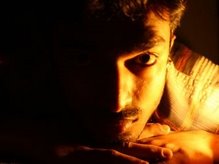In spite of expending sleepless nights giving deep thoughts on what could be the technique behind our brain solving the problem of depth perception, my brain only gave me a drowsier day ahead. So I started to filter out the possibilities to narrow down to the solution. The question I asked to myself was; is our brain using knowledge to correspond the left and the right images, or is it something that happens more mechanically? I had tried out a lot of knowledge based approaches, but only in vain and even the discussion that we had in the earlier post concluded to nothing. I wanted to take a different route by thinking of a more mechanical and less of a knowledge based approach. My brain then pointed me to the age old theory proposed by Thomas Young to explain the wave nature (interference) of light, “The double Slit Experiment”. How could this be of use to solve a seemingly unrelated problem of depth perception? On comparing you will find a few things in common between the two setups. Both are trying to deal with light and both of them are trying to pass the surrounding light through two openings and combine them later. I excitedly thought, have I unlocked the puzzle?
Let’s analyze and understand it better to know if I really did! I am neither an expert in physics nor biology, so I can only build a wrapper around this concept and not verify its complete path.
λ is the wavelength of the light
s is the separation of the (slits/eyes)
x is the distance between the bands of light (also called fringe distance)
D is the distance from the (slits to the screen/eye and retina)
 As the source starts to move away from this bisecting line the symmetry in the pattern should start to degrade.
As the source starts to move away from this bisecting line the symmetry in the pattern should start to degrade.
If a light source is placed at 3 different locations equidistant from the center of the slits, the one at red would produce a symmetric pattern and the other two I guess would not. I have not experimented this and hence the letters NX (Not eXperimented). If my guess is right, a light source placed anywhere in the 3D space would produce a unique pattern on the screen!!! This means an analysis of this pattern would tell us the exact location of the source in the 3D space.





